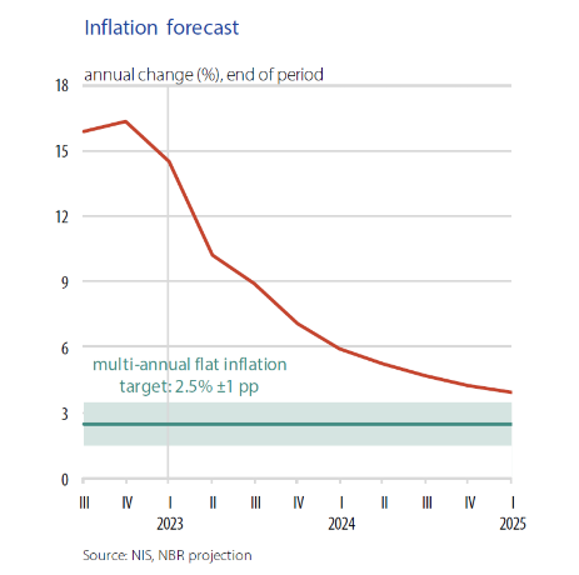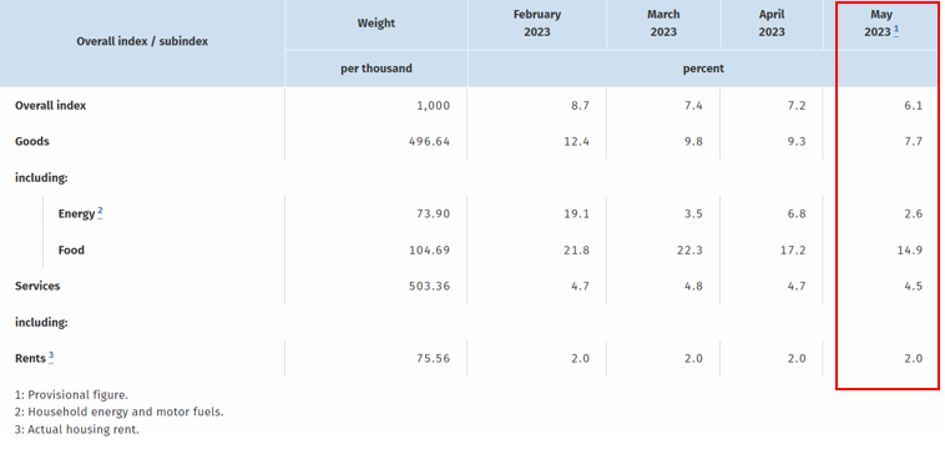:quality(80)/business-review.eu/wp-content/uploads/2023/06/Screenshot-2023-06-13-at-2.18.04-PM.png)
Tracking local and European inflation trends is particularly important, not only because it represents a reliable indicator of the economic dynamics we find ourselves in but also because, when combined, they have a significant impact on monetary and fiscal policies.
The import-export sector is especially vulnerable to inflation because currency rates are the first to absorb variations.
Why is inflation significant, and why it pays off to track it?
On a larger scale, inflation significantly affects the population’s purchasing power and, subsequently, all businesses that target the B2C market.
“However, this also applies to the B2B customers, as inflation only adds to the plethora of problems entrepreneurs already have, including reaching projected profitability,” notes Daniel Bogiu, Country manager for AKCENTA CZ in Romania.
Inflation fluctuations directly impact competitiveness in international trade. High inflation can lead to the appreciation of the local currency, causing prices of products and services from that country to increase on the external market. Conversely, low inflation can have the opposite impact, ultimately making exports more competitive. Estimating price increases are necessary to consider the effects on income and expenses, anticipating critical situations.
“Watching inflation trends has multiple approaches, but one that we noticed always has a good result is to pair economies rather than currencies alone. For example, 18% of Romania’s exports reach Germany, making this the leading export partner in Europe. It also means that CPI rates in Germany will directly affect Romanian businesses,” adds Bogiu.
Minor deceleration of CPI in Germany and what it means for Romania’s international trade
The latest data reveals a clear deceleration in Germany’s consumer inflation (CPI). According to the preliminary estimate provided by Destatis, the German statistical office, inflation based on the CPI index experienced a monthly decrease of 0.1% in May, while year-on-year growth slowed to 6.1% from 7.2% in April. We attribute this moderation in inflation to a slighter increase in energy and food prices and a minor slowdown in price dynamics within the services sector. Considering the May CPI figures in conjunction with the decline in oil and gas prices, the world food index, and PPI inflation, it appears likely that inflation will continue to decline throughout the second half of this year.

Regarding inflation in Romania, we expect it to decrease in the coming period. In Germany, for example, the current trend indicates that inflation continues to decline, starting from May gradually. The countries in the rest of Europe experience a relatively similar economic dynamic, with the purchasing power of money beginning to increase. However, it will still take a long time to reach equilibrium.

Steps to develop a resilience plan for your import-export business
If you own an import-export company and want to build a resilience plan for your business, which includes streamlining customs expenses and utilizing financial instruments to control costs, you should consider several essentials:
- Assess risk: Identify and evaluate your business’s risks regarding imports and exports. Risks can include currency fluctuations, changes in customs policies, political or economic instability in the countries of origin or destination, and changes in trade regulations. Understanding and evaluating them will help you develop appropriate resilience strategies.
- Diversify markets: In the context of market changes and risks, it is vital to diversify markets and trading partners. This way, you will reduce dependence on a specific need and have more options in case one of the markets faces difficulties.
- Analyze customs costs: Examine customs costs in detail and identify opportunities for streamlining them. You can consult customs experts to understand regulations better and determine potential tax reductions or exemptions to which your business may be allowed.
- Utilize financial instruments: Identify and evaluate the available financial instruments to help your business manage currency risks and control costs. Those could include better FX rates for SPOT transactions, currency hedging for pairs your business uses daily or other strategies to protect your business from unwanted currency fluctuations.
“A resilience plan is not a static process. You need to review it regularly, and whenever you’re overwhelmed by the volume of market information, you can ask an expert in currency trading to support you. Our representatives are more than traders; they watch the trends and provide customers with information on what moves in the market, thus helping them to make savings for their businesses,” says Daniel Bogiu.
Conclusion
Remember that each business is unique is crucial, and the resilience plan must be strategically and precisely tailored to ensure the company’s profitability. Collaborating with consultants that understand how the wheels of trading are rolling in the market you focus on is what you should search for if you want to keep the upward trend for your profits.



:quality(80)/business-review.eu/wp-content/uploads/2024/02/Akcenta_CEO_Jacek_Jurczynski-scaled.jpg)



:quality(80)/business-review.eu/wp-content/uploads/2024/06/22C0420_006.jpg)

:quality(80)/business-review.eu/wp-content/uploads/2024/06/COVER-1-4.jpg)



:quality(80)/business-review.eu/wp-content/uploads/2024/06/br-june-2.jpg)
:quality(50)/business-review.eu/wp-content/uploads/2024/07/VGP-Park-Timisoara_-8thbuilding_iulie-24.jpg)
:quality(50)/business-review.eu/wp-content/uploads/2024/07/America-House-Offices-Bucharest-Fortim-Trusted-Advisors.jpg)
:quality(50)/business-review.eu/wp-content/uploads/2024/07/BeFunky-collage-33-scaled.jpg)